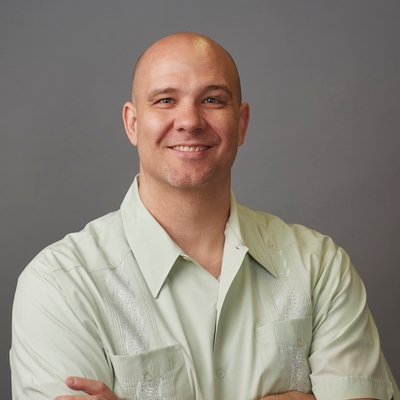I have read Robin Wall Kimmerer’s Braiding Sweetgrass: Indigenous Wisdom, Scientific Knowledge and the Teachings of Plants many times over the years. But the fall of 2021 was the first occasion when I have taught it extensively.
I teach in Tisch’s Department of Art & Public Policy, where we work with students from all over the world. Our students are artists, theorists, activists, curators, teachers and entrepreneurs, so their practices and training are diverse. No two people are alike. What they share is an interest in the relationship between creativity and social change. In teaching our core Methods & Criticism class in the fall, I wanted to see how Braiding Sweetgrass might mobilize the imaginations of our very unique student cohort. I assigned it as one of the key texts and we spent three weeks conducting slow reading and in-depth discussions.
The book is a dynamic catalyst for thinking through methodology because it weaves Indigenous practices of reciprocity, storytelling and living in relation, with insights and lessons from science, all while engaging what Kimmerer calls the teachings of plants. The text pushes students to think beyond expected embodiments of knowledge, the rigidities of narrow academic disciplines, and falsely dichotomized contexts like classroom and real world. Braiding Sweetgrass offers guidance in an ethical praxis of living in balance with the more than human.
It also challenges us to critically contend with colonialism as an ongoing process that has devastating impacts on climate change, including habitat loss, extraction, short-sightedness and displacement. The violence enacted on Indigenous people, the more than human and the land and water are countered by confronting racism and market-based frenzies with resilience, reciprocity and restoration.
Kimmerer is a poet, and these essays find their pace in language that is flowing and lithe. She crisply distills complex biological processes, ecological relations and horrific histories. Her storytelling is at once supple and direct. She also asks us to think about language itself — what words we know and use, and why. In multiple sections the book examines education and learning, pedagogies and power. She mindfully holds the haunted legacy of Indian boarding schools, the uniqueness of language and connection to place, the impacts of language as the embodiment of worldviews and ways of knowing.
Our student discussion leaders keyed on this, noting the following reminders from Kimmerer:
“Only 30 percent of English words are verbs, but in Potawatomi that proportion is 70 percent.” (53)
“To be a hill, to be a sandy beach, to be a Saturday, all are possible verbs in a world where everything is alive.” (55)
“Language is the dwelling place of ideas that do not exist anywhere else (258).”
They also questioned whether this last quote might perhaps be too esoteric, especially if part of the book’s charge is to have us enact restorative ways of living not just in language but everywhere around us. Students began asking one another questions such as, “How does a language with more verbs affect humans’ relationship with our environment?” They also asked, “Is it possible to have a model that follows the concepts of no waste, shared balance, and acts of reciprocity under the social organization of a wage economy?” They honed in on Kimmerer’s insight that “In Western thinking, private land is understood to be a ‘bundle of rights,’ whereas in a gift economy property has a ‘bundle of responsibilities’ attached.” (27-28) They also asked if we need to give greater scrutiny to human vices such as greed, and probed how we can reconsider concepts of place, ownership and belonging in an increasingly globalized world.
Each week students gave each other prompts for writing reflections, in dialogue with Kimmerer as well as their own iterative and evolving creative practices. “Do you incorporate the practice of gratitude (as Kimmerer understands it) in your creative, intellectual or political processes?” they asked one another. “If so, how do you do it?”
On first blush, Braiding Sweetgrass might seem to be a somewhat unexpected core text for a Masters program in arts politics. But it reveals valuable lessons throughout. Near the end of the book, Kimmerer tells the story of Franz Dolp, whose goal “to plant an old-growth forest” was purposeful not paradoxical. While working for years on this slow and challenging yet vital act of restoration, Dolp also wrote about his process. He noted:
“Given my lack of technical expertise, I could not reconcile myself to the title of ‘forester,’ but I could live with the idea that I am a writer who works in the forest. And with the forest. A writer who practices the art of forestry writes in trees. The practice of forestry may be changing, but I am unaware of any instances where proficiency in the arts is sought as a professional qualification by timber companies or schools of forestry. Perhaps that is what we need. Artists as foresters.” (290)
Kimmerer repeatedly models for us traditional knowledge keepers as innovators, scientists as storytellers, humans as but one important node in intricate networks of vibrant relations. She reminds us that in ecological justice, we are together “reclaiming our responsibility as cocreators.” (292)
I want to thank all of the students in the Fall 2021 Methods & Criticism 1 course, especially discussion leaders Rachel Nyakaana Blair, Xyza Bacani, Alexis Acosta, Antonieta Landa, Romina Schulz, and Bair Warburton-Brown. It was a privilege to think, learn and grow with you, and in relationship to Kimmerer’s wisdom.
